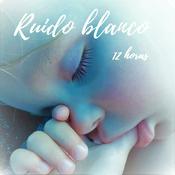189 episodios

A Kernis premiere wins the Pulitzer
10/1/2026 | 2 min
SynopsisOn today’s date in 1998, the Lark Quartet gave the first performance of the String Quartet No. 2 by American composer Aaron Jay Kernis. Like much of his music, the new quartet drew upon an eclectic variety of influences.As he put it: “My String Quartet No. 2 uses elements of Renaissance and Baroque dance music and dance forms as its basis and inspiration. For years I’ve played various Bach suites and pieces from the Fitzwilliam Virginal Book at the piano for my own pleasure, and I suspected for some time that their influence would eventually show up in my own work.”The Lark Quartet had commissioned Kernis’ String Quartet No. 1, and, like the composer, were over the moon when they learned No. 2 had won the Pulitzer Prize for music. Just three months after its premiere, he got the news by phone as he was headed to the airport to catch a flight to Spain. “I haven’t had a martini in years, but that’s sort of what it felt like,” he recalled. Kernis’ String Quartet No. 2 was a triple commission from Merkin Concert Hall in New York, Ohio University, and The Schubert Club of St. Paul, Minnesota, and was dedicated to Linda Hoeschler, the former Executive Director of the American Composers Forum.Music Played in Today's ProgramAaron Jay Kernis (b. 1960): String Quartet No. 2 (musica instrumentalis); The Lark Quartet; Arabesque 6727

Bartok's 'Contrasts'
09/1/2026 | 2 min
SynopsisIn January of 1939, famous jazz clarinetist Benny Goodman was playing each night at New York’s Paramount Theater. On today’s date that year, he also appeared on the stage of Carnegie Hall.The occasion was the American premiere of a new chamber trio by the Hungarian composer Bela Bartok, commissioned by Goodman at the suggestion of Bartok’s compatriot, violinist Joseph Sizgeti. The work was billed as a two-movement “Rhapsody” for clarinet, violin and piano.Now, in 1939 Goodman was at the peak of his popularity with the swing-crazed youth of America, and the New York Times music critic felt the need to write: “There is no indication that Bartok wrote the clarinet part for Benny’s clarinet, so jitterbugs reading this review have been simply wasting their time. The work is as Hungarian as goulash, and Mr. Goodman was artist enough to restrain himself from any insinuation of swing. Indeed, considering that he had probably left the stage of the Paramount Theatre some minutes before he appeared on that of Carnegie Hall, the purity of his style and the bright neatness of his technique were particularly admirable.”The following year, Goodman and Szigeti recorded the trio with Bartok himself at the piano. For that occasion, Bartok added a third movement, and the resulting work was re-titled Contrasts.Music Played in Today's ProgramBéla Bartók (1881-1945): Contrasts; Benny Goodman, clarinet; Joseph Szigeti, violin; Bela Bartok, piano; CBS/SONY 42227

William Bolcom and William Blake
08/1/2026 | 2 min
SynopsisIf the late 18th century is the Classical Age, and the 19th The Romantic, then perhaps we should dub our time “The Eclectic Age” of music. These days, composers can — and do — pick and choose from a wide variety of styles.American composer William Bolcom was loath to rule anything out when he approached the task of setting William Blake’s Songs of Innocence and of Experience to music. Bolcom calls for a large orchestra, multiple choruses, and more than a dozen vocal soloists versed in classical, pop, folk, country, and operatic styles. There are echoes of jazz, reggae, gospel, ragtime, country and rock idioms as well.As Bolcom put it: “At every point Blake used his whole culture, past and present, high-flown and vernacular, as sources for his many poetic styles. All I did was use the same stylistic point of departure Blake did in my musical settings.”The massive work received its premiere performance in Stuttgart, Germany, on today’s date in 1984.Most of the work was completed between 1973 and 1982, after Bolcom joined the faculty of the University of Michigan in Ann Arbor, and it was there that the work received its American premiere a few months following its world premiere in Germany.Music Played in Today's ProgramWilliam Bolcom (b. 1938): Songs of Innocence and of Experience Soloists; Choirs; University of Michigan School of Music Symphony; Leonard Slatkin, conductor; Naxos 8.559216/18

'Statements' from Copland
07/1/2026 | 2 min
SynopsisIn 1935 Aaron Copland finished a new orchestral work that was to be premiered by the Minneapolis Symphony and its young conductor Eugene Ormandy.The work, Statements for Orchestra, consisted of six short movements, each with a descriptive title, namely: Militant, Cryptic, Dogmatic, Subjective, Jingo and Prophetic. The Jingo movement alludes to the popular tune Sidewalks of New York — where Copland completed the orchestration of his new score.The last two movements were premiered by the Minneapolis Symphony early in 1936, first on an NBC radio broadcast, then on one of the orchestra’s subscription concerts. The conductor, however, was not Ormandy but rather Dimitri Mitropoulos, who would become the Music Director of the Minneapolis Symphony the following year. And it was Mitropoulos who would lead the first complete performance of all six of Copland’s Statements on today’s date in 1942 during a concert by the New York Philharmonic.The new piece got good reviews, and Copland quoted with pride one given by his friend and colleague Virgil Thomson, which called the music “succinct and stylish, cleverly written and very, very personal.”Much to his surprise this music never really caught on with orchestras or audiences. “To my disappointment, Statements remains one of my lesser-known scores,” Copland wrote. Music Played in Today's ProgramAaron Copland (1900-1990): Statements; London Symphony; Aaron Copland, conductor; Sony 47232

Concertos by Poulenc and Carter
06/1/2026 | 2 min
SynopsisAmerican composer Ned Rorem liked to classify music as being either French or German — by “French,” he meant music that is sensuous, economical and unabashedly superficial; by “German,” he meant music that strives to be brainy, complex and impenetrably deep.On today’s date the Boston Symphony gave the premiere performances of two important 20th century piano concertos.The first, by Francis Poulenc, had its premiere under the baton of Charles Munch in 1950, with the composer at the piano. Poulenc’s concerto is a light, entertaining with no pretension to profundity. It is quintessentially “French” according to Rorem’s classification.The second Piano Concerto, by American composer Elliott Carter, had its Boston premiere in 1967, conducted by Erich Leinsdorf, with soloist Jacob Lateiner. The concerto was written in Berlin in the mid-1960s when the Wall dividing that city was still new. He said he composed it in a studio near an American target range, and one commentator hears the sounds of machine guns in the work’s second movement. Carter compared woodwind solos in the same movement to the advice given by three friends of the long-suffering Job in the Bible.Needless to say, Rorem would emphatically classify Carter’s concerto as “German” to the max!Music Played in Today's ProgramFrancis Poulenc (1899-1963): Piano Concerto; Pascal Roge, piano; Philharmonia Orchestra; Charles Dutoit, conductor; London 436 546Elliott Carter (1908-2012): Piano Concerto; Ursula Oppens, piano; SWF Symphony; Michael Gielen, conductor; Arte Nova 27773
Más podcasts de Música
Podcasts a la moda de Música
Acerca de Composers Datebook
Escucha Composers Datebook, SongBook y muchos más podcasts de todo el mundo con la aplicación de radio.net

Descarga la app gratuita: radio.net
- Añadir radios y podcasts a favoritos
- Transmisión por Wi-Fi y Bluetooth
- Carplay & Android Auto compatible
- Muchas otras funciones de la app
Descarga la app gratuita: radio.net
- Añadir radios y podcasts a favoritos
- Transmisión por Wi-Fi y Bluetooth
- Carplay & Android Auto compatible
- Muchas otras funciones de la app


Composers Datebook
Descarga la app,
Escucha.

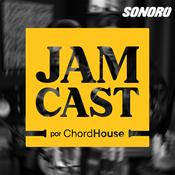




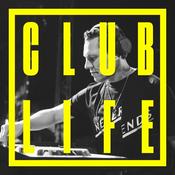


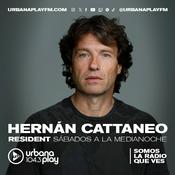





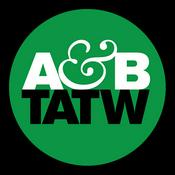
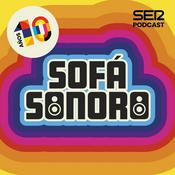



![Podcast [PluToNiuM] Radioaktiv.HardBangin.IndustrialTechno](https://mx.radio.net/podcast-images/175/plutonium-techno-darktechno-hardtechno.jpeg?version=7d15369d178879c2d54cdc80cf22e4447cad4737)





